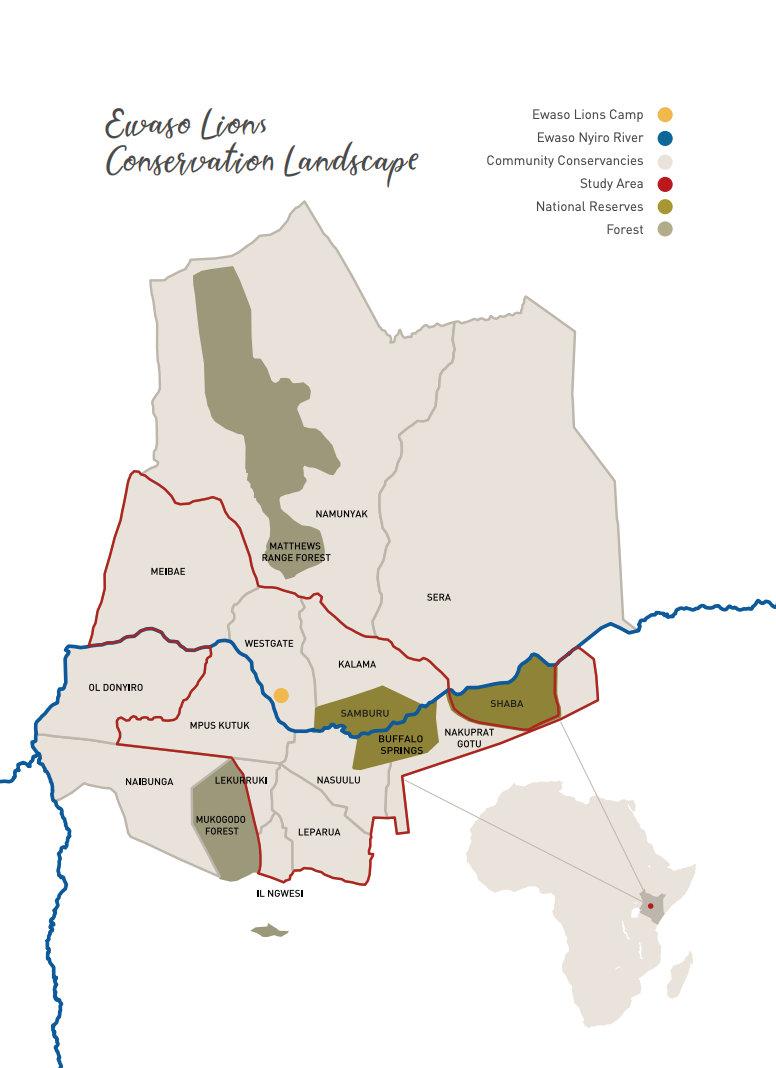Photo courtesty of Ewaso Lions
The African lion population has declined by 43% in the last 20 years and lions now occupy only 8% of their historical range in Africa. The estimated number of lions across Africa is as few as 20,000, with numbers now less than 2000 in Kenya. Please join us in supporting Ewaso Lions , an important organization working with communities to save lions in Kenya. We are excited to announce that an amazing donor has generously pledged a matching challenge grant of $4500, please donate today to help us reach this goal and give Ewaso Lions the support they desperately need to save these special and endangered animals.
This Challenge Grant will fund Ewaso Lions including:
$80 a month for one teacher’s salary
$150 a month for the Mama Simba Coordinators
$150 a month for the Warriors salaries
$405 a month for an Ewaso Lions vehicle
$3000 for Lion’s Kid Camp for 25 kids for 5 days
“At current rates of decline, the species could become extinct here within the next two decades. This reduction in lion numbers is primarily due to habitat loss and conflict with humans, typically when lions kill people’s livestock. Lions and other large carnivores are wide-ranging species and designated protected areas are often not large enough to ensure their long-term survival. Therefore, it is crucial that conservation of these species, as well as their prey, is addressed throughout the landscape, which not only incorporates protected areas but also the surrounding areas where local people live
Ewaso Lions is dedicated to conserving lions and other large carnivores by promoting co-existence between people and wildlife. We work hand-in-hand with local communities to provide education, training and improved conservation practices that help people and wildlife. We use sound science to help guide the long-term conservation of lions across community conservancies and protected areas in northern Kenya.”
Herding children playing the conservation game, crawling blindfolded and masked through the burning bush © Danni Parks / Ewaso Lions
Ewaso Lions promotes the co-existence of people and wildlife by working directly with local communities to provide education and conservation. Their programs include the Lion Kids Camp, Warrior Watch, and Mama Simba. This past year they expanded to three new conservancies, and 10 lion cubs were born within the Ewaso Lion Conservation Landscape (map below).
The Lion Kids Camp was created to inspire a whole new generation of wildlife conservationists. Since 2015, 10 camps have run with the next generation featuring a combination of wildlife education, safaris and conservation-themed games and activities.
The Warrior Watch plays a vital role in monitoring wildlife and stopping conflict between humans and lions. In 2018 there were 699 patrols, 4,684 km of foot patrols covered, 1472 direct sightings of wildlife, 32 times lions were saved from the imminent threat of death, 64 times warriors responded to human-lion conflict. Jeneria and the other warriors were featured on a recent episode of Wildlife Warriors, which can be watched in it’s entirety here.
The Mama Simba is comprised of a group of 19 women, led by the Mama Simba Coordinators Munteli & Mparasaroi. Together with other women in their communities these women are true powerhouses and they spread the conservation message, report on lion sightings and conflict incidents. This past year, the Mama Simba visited the Maasai Mara to learn new ideas for conservation in the Samburu.
“Key to our empowerment strategy is giving women exposure to new places and experiences, so they can infuse fresh ideas into the way they want to do conservation. The Mama Simba ladies’ visit to the Maasai Mara signals to us a sea-change in how they think about their landscape. While they gasped with wonder at topis, wildebeest and rhinos - animals they had never seen before - they lamented the extensive
fencing across the Mara and its implications for livestock and wildlife. Having seen their first pride of lions in the Mara - a whopping 22 strong pride - they returned more determined than ever to speak for the lions of Samburu. And speak they did. Even before they got home, the women who had long been voiceless, called conservancy managers to tell them what they had seen, and to set up meetings where they could talk about conservation. With their eyes wide open, and their voices louder than ever, the possibilities for the Mama Simba ladies are endless.”
“We saw more animals than we could count in the Mara. There is a lot of food for lions there, as opposed to Samburu where we have very little prey. But wildlife is facing major challenges in the future because of land sub-division and fencing. I would hate to see this happen to our land. Wildlife corridors will soon be lost and this will be very unfortunate.”
Map of Ewaso Lions conservation landscape, courtesy of Ewaso Lions





